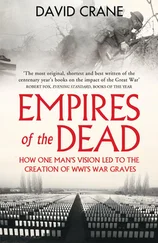It is this “inner connection” which concerns us. The sounds plu and sta, which could hardly be more different from the acts of flowing and standing, must nevertheless exhibit some mysterious connection which the mind fastens upon, a connection which, since it is not a kind of univocal likeness, must be a kind of analogy.
THERE IS NO such thing, strictly speaking, as a literature of alienation. In the re-presenting of alienation the category is reversed and becomes something entirely different. There is a great deal of difference between an alienated commuter riding a train and this same commuter reading a book about an alienated commuter riding a train. (On the other hand, Huck Finn’s drifting down the river is somewhat the same as a reader’s reading about Huck Finn drifting down the river.) The nonreading commuter exists in true alienation, which is unspeakable; the reading commuter rejoices in the speakability of his alienation and in the new triple alliance of himself, the alienated character, and the author. His mood is affirmatory and glad: Yes! that is how it is! — which is an aesthetic reversal of alienation. It is related that when Kafka read his work aloud to his friends, they would all roar with laughter until tears came to their eyes. Neither Kafka nor his reader is alienated in the movement of art, for each achieves a reversal through its re-presenting. To picture a truly alienated man, picture a Kafka to whom it had never occurred to write a word. The only literature of alienation is an alienated literature, that is, a bad art, which is no art at all. An Erle Stanley Gardner novel is a true exercise in alienation. A man who finishes his twentieth Perry Mason is that much nearer total despair than when he started.
I hasten to define what I mean by alienation, which has become almost as loose an epithet as existentialism (if you do not agree with me, it is probably because you are alienated). I mean that whereas one commuter may sit on the train and feel himself quite at home, seeing the passing scene as a series of meaningful projects full of signs which he reads without difficulty, another commuter, although he has no empirical reason for being so, although he has satisfied the same empirical needs as commuter A, is alienated. To say the least, he is bored; to say the most, he is in pure anxiety; he is horrified at his surroundings — he might as well be passing through a lunar landscape and the signs he sees are absurd or at least ambiguous. (It will not be necessary at this point to consider the further possibility that commuter A’s tranquillity is no guarantee against alienation, that in fact he may be more desperately lost to himself than B in the sense of being anonymous, the “one” of “one says.”)
Alienation, in its turn, is itself a reversal of the objective-empirical. This is a purely existential reversal and has nothing to do with art. It is very simply illustrated in the case of the alienated commuter. This man — though he will have met every “need” which can be abstracted by the objective-empirical method — sexual needs, nutritional, emotional, in-group needs, needs for a productive orientation, creativity, community service — this man may nevertheless be alienated. Moreover he is apt to be alienated in proportion to his staking everything on the objective-empirical. By his alienation, the objective-empirical categories are reversed. What causes anxiety in the one is the refuge from anxiety in the other. For example, speaking objectively-empirically, it is often said that it is no wonder people are anxious nowadays, what with the possibility that the Bomb might fall any minute. The Bomb would seem to be sufficient reason for anxiety; yet as it happens the reverse is the truth. The contingency “what if the Bomb should fall?” is not only not a cause of anxiety in the alienated man but is one of his few remaining refuges from it. When everything else fails, we may always turn to our good friend just back from Washington or Moscow, who obliges us with his sober second thoughts—“I can tell you this much, I am profoundly disturbed…”—and each of us has what he came for, the old authentic thrill of the Bomb and the Coming of the Last Days. Like Ortega’s romantic, the heart’s desire of the alienated man is to see vines sprouting through the masonry. The real anxiety question, the question no one asks because no one wants to, is the reverse: What if the Bomb should not fall? What then?
The estrangement of the existing self is not capable of being grasped by the objective-empirical method simply because the former is specified by the latter as its reverse. I would like to avoid a polemical tone here. I do not wish to be understood as attacking the objective-empirical method and contemning its truth and beauty and fruitfulness — which the European existentialists do indiscriminately while at the same time living very well on its fruits — but as stating the fact of the reversal: It does happen that the Dasein or existing self characteristically reverses objective-empirical sociological categories and discovers in them not the principle of its health but the root source of its alienation.
To illustrate the specific character of the reversal: it is just when the Method tries to grasp and categorize the existential trait that it is itself reversed and becomes a powerful agent not of progress but of alienation. It is just when the alienated commuter reads books on mental hygiene which abstract immanent goals from existence that he comes closest to despair. One has only to let the mental-health savants set forth their own ideal of sane living, the composite reader who reads their books seriously and devotes every ounce of his strength to the pursuit of the goals erected: emotional maturity, inclusiveness, productivity, creativity, belongingness — there will emerge, far more faithfully than I could portray him, the candidate for suicide. Take these two sentences that I once read in a book on mental hygiene: “The most profound of all human needs, the prime requisite for successful living, is to be emotionally inclusive. Socrates, Jesus, Buddha, St. Francis were emotionally inclusive.” These words tremble with anxiety and alienation, even though I would not deny that they are, in their own eerie way, true. The alienated commuter shook like a leaf when he read them.
To go back to the aesthetic reversal of alienation by art: Literature, like a polarizing crystal, makes a qualitative division among existential traits accordingly as it transmits some more or less intact, reverses some, and selectively polarizes others, transmitting certain elements and canceling others. Alienation is reversed: There can no more be a re-presenting of alienation than Kierkegaard’s category of trial, for it, like trial, absolutely transcends the objective-empirical; Job’s and Abraham’s trials are lost in the telling. The categories, rotation and repetition, on the other hand, not being purely existential but aesthetic-existential, are transmitted. Yet they are transmitted with a difference. Rotation is conveyed more or less intact, whereas repetition is accomplished only by a mediate act of identification. Thus, reading about Huck going down the river or Tenente Frederic Henry escaping from the carabinieri in A Farewell to Arms is somewhat like going down the river and escaping. It is by virtue of the fact that rotation is the quest for the new as the new, the reposing of all hope in what may lie around the bend, a mode of experience which is much the same in the reading as in the experiencing. But repetition, in order to occur, requires a more radical identification. Thus when Charles Gray in Marquand’s Point of No Return returns to Clyde, Massachusetts, or when Tom Wolfe’s hero returns to the shabby boardinghouse in St. Louis, the reader can experience repetition only if he imagines that he too is a native of Clyde or has lived in St. Louis. (He doesn’t have to imagine he is Huck — it is he, the reader, who is drifting down the river.)
Читать дальше












